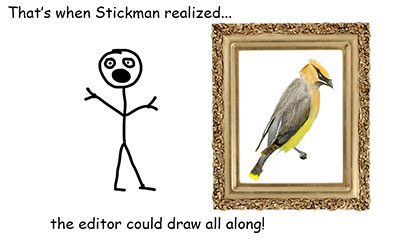
Pretty much every story needs an ending. (See how I avoided an absolute there?) This is not just a convenient stopping place, but a payoff that gives your readers what they want. And what’s that, exactly? It depends on what kind of story you’re telling.
Continuing our exploration of the four essential story types, this month we’ll devote a few words to the idea story. And because we’re talking about endings, we’ll also be spoiling the twists of several classic films., spoiler alert!
Don’t Tell a Soul
The idea story builds suspense by withholding information. The resolution comes when the hidden information is revealed. The action often follows the process of uncovering the hidden knowledge. It is the natural structure, then, for mystery stories that begin when a crime occurs and climax when the detective reveals who did it and how and for certain subgenres of hard SF, where a scientific problem presents itself and the heroes work toward a solution or explanation.
Get a free sample proofread and edit for your English document.
Two professional proofreaders will proofread and edit your English document.
Every story starts with an idea, of course, often one framed as a question, such as, “What if the protagonist is actually dead the whole time?” Many films have used this basic idea, but to vastly different purposes and effects.
In both The Sixth Sense (1999, written and directed by M. Night Shyamalan) and Jacob’s Ladder (1990, directed by Adrian Lyne, screenplay by Bruce Joel Rubin), the films builds up to revealing its idea. The rising action is an escalating parade of mysteries. The question driving our engagement is “Why are these strange things happening?” The climax (reveal) answers the question and resolves the drama, inviting the audience to reconsider everything we’ve seen in light of the new information. That’s the idea story structure at work.

What’s the Big Idea?
But it’s not the substance of the idea that makes an “idea story.” You can start from essentially the same concept and move in different storytelling directions, which will determine the story structure. What Dreams May Come (1998, directed by Vincent Ward, story by Richard Matheson) is largely a tour of a psychedelically rendered afterlife, a milieu story. A Ghost Story (2017, written and directed by David Lowery) is a character study, dramatizing the grieving process as the protagonist copes with his own demise. Beetlejuice (1988, directed by Tim Burton, story by Michael McDowell) is an event story; the ghosts, peacefully haunting their beloved home, have their status quo disrupted when a living family moves in and must either drive out the intruders or find a way to coexist.
In all of these, our understanding that the characters are deceased comes not at the climax, but at the outset. It’s part of the premise, a hook serving a larger narrative purpose rather than the main point of the story.
A Twist in the Tale
The idea story structure has a bad reputation with editors and teachers, partly because of its association with genre fiction, but mostly because it is often thoughtlessly applied. Inexperienced writers reach for it because withholding information seems like an easy way to build suspense. Satisfying endings are difficult; a twist (the idea story structure lends itself to twist endings) offers a shortcut. Now, a good twist has its charms, but there’s something cheap about it. The sense that you’re holding out on the audience lessens the story’s stakes.
So unless you’re writing a whodunit, tread lightly with the idea story structure. A strong idea can still sell a story, but it would have to be a very strong idea indeed.
And if your idea is truly that strong, it can probably support more than a cheap twist. One of the greatest shock endings in cinema comes in 1968’s Planet of the Apes, directed by Franklin Schaffner and scripted by Rod Serling, creator of TV’s Twilight Zone. But the concept proved provocative enough to spawn two film franchises; its implications only became clear, though, when the writers moved past “What if?” to start asking, “So what?”
Ultimately, the idea itself is less important than what you do with it. The late SF grandmaster Gene Wolfe wrote that ideas are like tigers: big and powerful, even scary. But while the tigers in the zoo are just as big and powerful as the ones at the circus, they don’t really do anything, they just lie around, being tigers. And while people pay good money to go to the circus and watch the tigers jump through hoops, in many places you can go to the zoo for free.
So before you run to put your idea on display, spend some time teaching it a few tricks. Your story will be better for it.
Jack F.
Get a free sample proofread and edit for your English document.
Two professional proofreaders will proofread and edit your English document.
Get a free sample proofread and edit for your document.
Two professional proofreaders will proofread and edit your document.
We will get your free sample back in three to six hours!